22 Weather Myths And Superstitions Addressed, Explained, Or Debunked
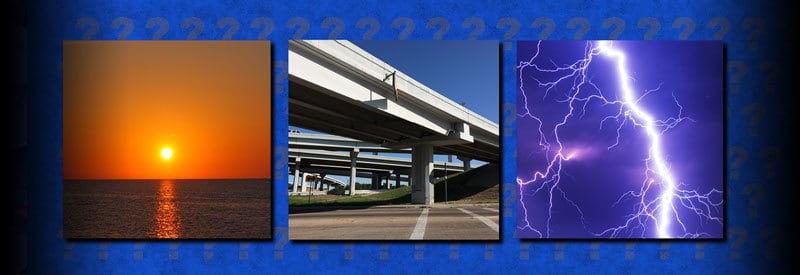
Some have been around for centuries, while new ones are formed every day, but weather myths and misconceptions about certain meteorological phenomena are still surprisingly popular today.
Weather myths, superstitions, or folklore. Call them what you want, but they are here to stay. As mentioned, they have been around for centuries and will still be around long after we are all gone.
Many of these weather myths are very loosely based on some truths, but in general is either a simple misunderstanding of events, coincidence, or just stories created to spread controversy and create some sensation.
Some myths are harmless enough and can be quickly dismissed. However, there are quite a few myths that can be potentially very dangerous and needs to be addressed and corrected.
Before continuing, though, we first need to clarify what precisely a weather myth is.
What Is A Weather Myth
Collins Dictionary gives a good explanation by describing a myth as follows: "A myth is a well-known story which was made up in the past to explain natural events or to justify religious beliefs or social customs."
Most of you will already know that the weather is a variety or combination of different atmospheric conditions, including heat, cold, wind, rain, snow, cloud formation, and storms.
Therefore it can be concluded that a weather myth (or folklore) is a well-known story or belief which was made up in the past to explain or predict various atmospheric conditions.
But does this mean all weather myths are just made-up stories or superstitions? Not at all. As you will soon find out, many of these "myths" turn out to be very accurate and backed up by scientific evidence.
22 Weather Myths Examined And Explained
To see how much truth, or lack of it, there is to these weather myths, we take a look at the most popular or common beliefs. More specifically, we have chosen 22 examples to illustrate how a weather myth can be true, false, or very loosely based on the truth:
- A Waterspout Turns Into A tornado When Reaches Land
- It's Just A Tropical Storm
- Lightning Never Strikes Twice (At The Same Location)
- Open Your Windows When A Tornado Approaches
- Lightning Is A Physical Object
- You Are Safe From Lightning In A House
- Take Shelter Under A Highway Overpass To Protect From Tornadoes
- Lightning And Tornadoes Are The Leading Causes Of Fatalities
- Consume Alcohol To Warm You Up During Cold Weather
- A Tornado Can Not Cross Rivers And Dams
- Cold Weather Makes You Sick
- You Can Only Suffer From Sunburn During Summer Time
- The Strength Of The Winds In A Hurricane Determines Its Impact
- Flash Flooding Only Occur Near Water Sources Like Rivers, Lakes, And Dams
- A Rooster Reporting Rain In The Middle Of The Night
- It Is Safe To Drive Over A Flooded Bridge Or Roadway
- Painful Knees And Sore Joints Mean Bad Weather
- Victims Of Lightning Strikes Are Still Electrified
- “Red Sky At Night, Sailor’s Delight; Red Sky In The Morning, Sailors Take Warning.”
- New Spider Webs Means Dry Weather
- Lightning Only Strikes Tall Buildings
- The Sky Will Turn Green Before A Tornado
We take a closer look at each of these statements to see whether there is any truth to these "myths" and what the possible misconceptions might be.
1) A Waterspout Turns Into A tornado When Reaches Land
This myth may sound to have some validity to it but is not technically correct. A water spout (also called a water tornado) is already a tornado, even while it is still over water.
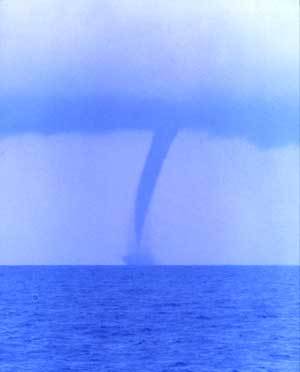
The tornado simply draws water from the surface of the ocean or lake which results in the water display you see in the air. As soon as the waterspout reaches the shore and dry land, it starts to pick up soil and debris, which leads to the familiar image we have of a tornado.
The atmospheric conditions and processes that created the tornado in the first place are exactly the same. The only thing that changed is the surface over which it occurs. Water that was sucked up into the tornado just got replaced by soil and debris once it reached land.
To find out more about a tornado and how it is formed, you can find the full article here.
2) It's Just A Tropical Storm
No, it's NOT just a tropical storm. You may have heard the saying, "A little knowledge is a dangerous thing." This is true for anyone willing to use this misconception to dismiss a serious situation. Some people view storms smaller than a hurricane as not that dangerous.
If you have some knowledge of hurricanes, you will know that they start as a tropical depression in the subtropical waters, and as it grows, it turns into a tropical storm. Once wind speeds exceed 74 mph, the storm is classified as a Category 1 Hurricane.
(From here, hurricanes are divided into categories, ranging from a Category 1 to a Category 5 Hurricane, all classified according to wind speed.)
Now keep in mind that the strongest tropical storm has wind speeds of up to 74 mph, and a Category 1 Hurricane starts at 75 mph. This means the difference between a tropical storm and a hurricane can be only one mile per hour!
The warm water of the tropics also causes the atmosphere to saturate with moisture. This usually results in heavy and sustained rainfall. Combined with the 74 mph strong winds, a tropical storm is still potentially deadly and can lead to severe damage and even loss of life.
It is called a storm for a reason and must be taken seriously. Everyone potentially affected must take extreme care during a tropical storm, including staying indoors and following all safety precautions.
If you are in any way unsure what a hurricane or tropical storm is and how they are formed, you can read the in-depth article here.
3) Lightning Never Strikes Twice (At The Same Location)
This statement is completely false and proven on multiple occasions. (The Empire States building in New York gets hit by lightning at least a hundred times on average each year.)
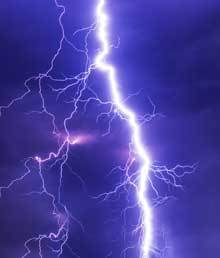
Lightning takes the easiest way to the ground. This does not mean it follows a straight line, as it has to find its way through the air (which normally acts as an insulator between electrical charges). This explains the "stepped" visual effect of a lightning bolt.
(You can read more about lightning, what it is, and how it is formed in this article.)
Once close to the ground, tall structures like radio towers and skyscrapers become easy targets and can be struck multiple times during one thunderstorm once in a decade. There is no reason or scientific evidence why lightning will not hit the same object more than once.
4) Open Your Windows When A Tornado Approaches
Many people are under the impression that the immense buildup of pressure that accompanies a tornado will cause the windows to blow inwards due to the strain.
The common belief is that by opening the windows, the pressure inside and outside the house will be equalized and the damage reduced. Although there is some truth behind this thinking, it is actually a misconception and will not cause any less damage.
First of all, you are wasting valuable time you could have used to get you, your family, and some precious belonging to the safety of a tornado shelter or the basement.
Secondly, a tornado is so powerful with winds blowing in all directions that it will blow right through the windows, open or not. If it is strong enough to lift houses off their foundations and heavy trucks into the air, an open window is not going to make any difference.
Lastly, with the windows open, air can easily enter the house and put upward pressure on the ceiling. Scientists believe the lift provided by this pressure makes it much easier for a tornado to lift the roof off a house.
5) Lightning Is A Physical Object
Although it looks like a separate object in every way, a lightning bolt is not a physical object. It is just the visual result of air warming up to 30 000° Celsius (54 000° Fahrenheit) within a fraction of a second (30 microseconds).
When the positive and negative charges in a cloud become too powerful to be insulated anymore, they collide and cause a huge electrical discharge (up to a billion volts) which results in the powerful lightning display as the air heats up in a fraction of a second.
This means lightning is not so much an object but rather an occurrence or an event.
6) You Are Safe From Lightning In A House
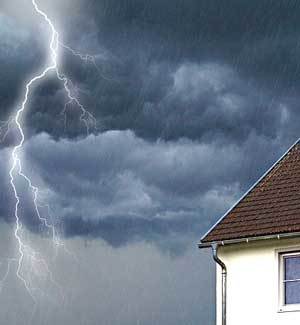
The tornado simply draws water from the surface of the ocean or lake, which results in the water display you see in the air. As soon as the waterspout reaches the shore and dry land, it starts to pick up soil and debris, which leads to the familiar image we have of a tornado.
The atmospheric conditions and processes that created the tornado in the first place are exactly the same. The only thing that changed is the surface over which it occurs. Water that was sucked up into the tornado just got replaced by soil and debris once it reached land.
To find out more about a tornado and how it is formed, you can find the full article here.
7) Take Shelter Under A Highway Overpass To Protect From Tornadoes
This is probably one of the worst actions you can take while on the road when a tornado. Leaving the relative safety of your home to go and hide under an exposed structure like a highway overpass. This is a very big and dangerous misconception.
Although an overpass is strongly built and can withstand the force of a tornado, it will not protect you at all. Not only are you completely exposed to dangerous flying debris, but tornadoes tend to funnel underneath overpasses, creating stronger gusts and wind swirls.
If you can, quickly find a low-lying spot like a trench or shallow depression in the field. If a sturdy concrete building is within reach, that will probably be your best option. If none of these options are available, staying in your car will be the next best thing.
8) Lightning And Tornadoes Are The Leading Causes Of Fatalities
Due to their violent nature and because they cause so much damage in such a short period of time, it is only natural to assume that these phenomena will be responsible for the majority of human deaths throughout the world.
Although they are potentially deadly and violent in nature, lightning and tornadoes are not the leading causes of fatalities. Not even close. So this assumption is, without a doubt, a myth or, better put, a big misconception.
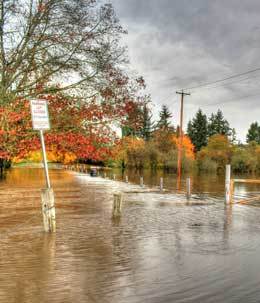
It is hard to highlight which weather phenomena are really the deadliest, as different parts of the world experience different kinds of weather events. With that said, flooding is, without a doubt, one of the leading (if not the main) causes of death globally.
Flooding always has the deadliest and most devastating impact on a region where a severe storm occurred. Whether it during or after a monsoon downpour in India or as a result of a hurricane hitting the Florida Coast, flooding is always the deadliest contributor.
A few examples to add some perspective: The 1931 China Floods reportedly took up to 4 million lives, the 1938 Yellow River Flood (also in China) caused up to 2 million deaths, and the 1530 St. Felix's Flood resulted in more than 100 000 deaths in the Netherlands.
Hurricanes and typhoons also lead to countless deaths throughout history due to flooding that outnumbers any amount of fatalities caused by lightning and tornadoes combined. Typhoon Nina resulted in 229 000 lives lost in 1975. (And that is just one typhoon.)
9) Consume Alcohol To Warm You Up During Cold Weather
Depending on your own habits and preferences, you may really wish this one to be true. Sadly, this is also a myth or misconception. In fact, alcohol has the opposite effect of warming you up and can put your health in danger.
When you consume alcohol, you actually do feel warmer. This is because the blood vessels close to your skin widen, and more blood is allowed to flow through them when you drink.
While you may feel warm, heat is taken away from your body's core, which is dangerous as keeping your body's core temperature elevated is essential. If you are still exposed to the cold, the dilated blood vessels will cool down very quickly, sometimes assisted by sweating.
As a result, your whole body's temperature, including your core, starts to drop at a rapid rate. In very cold weather, this can be dangerous and may lead to hypothermia and other conditions related to exposure to cold.
10) A Tornado Can Not Cross Rivers And Dams
This is just dead wrong and a real myth. Not only can tornadoes cross rivers and lakes, but some of them are also formed on the surface of the ocean or a lake. (Remember the waterspout phenomenon that was discussed earlier in this article?)
There is really not much more to say on this topic, except to please keep in mind that crossing a lake or river will not protect you from a tornado.
11) Cold Weather Makes You Sick
The most accurate way to describe this myth is to say that it is very loosely based on the truth. But, no, cold weather itself does not make you sick. You will not get a cold or flu by going outside on a chilly evening (even with wet hair.)

The only real reason you can get sick from being cold and wet is if your immune system is already weak or compromised. Cold weather tends to lower your immune system further by constricting your blood vessels and use more energy to cope with the cold.
Viruses and bacteria also tend to hang around longer in cold, dry air. Combine this with a weakened immune system, and you stand a greater chance of getting sick. But cold weather on its own will definitely not make you sick or cause an infection.
12) You Can Only Suffer From Sunburn During Summer Time
This statement is not true at all. You are exposed to the sun's harmful UV (ultraviolet) rays throughout the year. Although the intensity of the UV radiation is a lot less during the winter, spending a whole day in sunlight can still result in sunburn.
A cloudy sky also does not protect you from the sun's harmful UV radiation. Up to 80% of UV rays can pass directly through a cloud. The same applies to spending time in the shade. The UV radiation can be reflected from nearby surfaces onto your skin and cause sunburn.
The best way to stay safe is to put on some sunscreen if you know you will be spending a large part of the day outside. It doesn't matter whether if it is in the middle of winter.
13) The Strength Of The Winds In A Hurricane Determines Its Impact
The effects of hurricanes are well-known. Houses and structures get torn apart, trees and power lines are flattened, and cars & infrastructure are destroyed.

As devastating as these winds are, they don't have the biggest impact on lives and the environment. The most significant and longest-lasting impact is caused by flooding.
The large amount of moisture that the hurricane picked over the ocean causes huge and persistent downpours over the affected area. This leads to large-scale flooding, even days after the storm has passed.
The impact of flooding ranges from severe and irreversible damage to properties and infrastructure to human and animal fatalities. This can be a direct result of drowning or indirectly through waterborne diseases.
14) Flash Flooding Only Occur Near Water Sources Like Rivers, Lakes, And Dams
This belief is a complete falsehood and a potentially very dangerous one. Flash flooding can occur in any area like a basin or low-lying area, where a large amount of rain falls in a short period of time. If there are no or minimal runoff areas, the water cane levels rise quickly.
The cause of the flooding is usually heavy and sustained rainfall. In regions like India, the causes of flash flooding is a result of heavy downpours during a monsoon which can release a massive amount of water in a very short space of time.
If you live in a low-lying area and regularly experience sustained, heavy periods of rainfall, it is important that you stay aware of unexpected heavy downpours. With an increasingly unpredictable and volatile weather system, you may need to react very quickly.
15) A Rooster Reporting Rain In The Middle Of The Night
I had to research this one properly, as I didn't grow up on a farm or in a rural area. Well, according to folklore, if a rooster crows in the middle of the night, it means rain is on the way. (What I knew up to that point is that they usually crow at the crack of dawn.)

After some proper research, it became clear that there is absolutely no evidence or correlation between a rooster crowing in the middle of the night and approaching rainy weather. From a scientific and practical standpoint, no link could be established.
There are plenty of evidence of roosters crowing throughout the night, mostly found on forums where people complained and wanted advice on how to make them stop. (Sorry, no help available on that side as well).
The most common answer from most sources can be summed up as, "Roosters may crow before sunrise, to answer another rooster's crow, or whenever the hell they feel like it." Excuse the fairly crude, but that seems to be the general consensus regarding this issue.
16) It Is Safe To Drive Over A Flooded Bridge Or Roadway
This is a false and very dangerous statement or belief. Many motorists have misjudged the strength or depth of water-covered roadways in the past, with serious and sometimes tragic results. The sheer power of water is almost always are underestimated.
There is almost no way to accurately judge the state of a road surface beneath flowing water, as well as how deep the water is. The road surface may be completely washed away, and it only takes two feet of water to move most vehicles, including SUVs and small trucks.
This misconception (myth or falsehood) already resulted in multiple deaths and incidents of cars being washed away throughout the years. Never underestimate the power of water. It is simply not worth the risk.
17) Painful Knees And Sore Joints Mean Bad Weather
This statement is very hard to prove or disprove. Scientists and the medical community have already done countless studies. The amount of mixed results makes it impossible to draw any definitive conclusions between the weather and joint pain.

It has been determined that there is a definite connection between the change in air pressure and joint pain. The problem is that other atmospheric conditions like humidity and temperature also affect the body. This is part of what makes finding an answer so difficult.
One thing that can be concluded with certainty is that the human body can only "sense" weather conditions that it is currently experiencing, not which weather conditions it will experience in the future. So, this is a case that falls in the TBD (to be determined) category.
18) Victims Of Lightning Strikes Are Still Electrified
This statement is absolutely false. The human body has no capacity to store any form of electricity. When the lightning strike has gone, so have any traces of an electrical current.
When lightning strikes a person, a large surge of electricity flows through the body for a fraction of a second. Afterward, there is no electrical current flowing through it, and since the body is unable to store electricity, it is perfectly safe to touch and handle the individual.
19) “Red Sky At Night, Sailor’s Delight; Red Sky In The Morning, Sailors Take Warning.”
Although it is not always the case, this old saying can be considered mostly true. It is backed up by scientific evidence and eyewitness accounts.
The “Red Sky At Night, Sailor’s Delight" part can be explained as follows: When the sun sets behind a sky filled with dry dust particles, the sky appears orange-red due to the way the light is scattered by the particles which allow red light through.

This orange-red phenomenon usually points to a stable and high-pressure system approaching, which indicates good weather conditions are on the way.
The "Red Sky In The Morning, Sailors Take Warning" part has the opposite meaning: A deep red sky in the morning can be the result of large amounts of water moisture in the air. The moisture causes the light to scatter and allows the deep-red light to filter through.
The deep-red color points towards a low-pressure system and may indicate that wet and stormy weather conditions are on the way.
As I already stated, these weather conditions do not always occur, but there is enough scientific and eyewitness evidence to substantiate this old saying.
20) New Spider Webs Means Dry Weather
This belief has been proven to be true and is in line with meteorological principles. When spiders sense little or no humidity, they spin their webs as dry conditions will not destroy their webs, while they tend to hold back and wait when they pick up the moisture in the air.
As you would have guessed by now, spiders are very sensitive to humidity and can pick up the slightest change in moisture content in the air. This capability allows them to adapt to weather conditions before the rest of us are even aware of any changes.
There are other beliefs about certain spider behavior that also has validity, including a sudden increase in the number of spiders, as well as spiders appearing in numbers inside a home, but this is not relevant for the purpose of addressing this issue.
21) Lightning Only Strikes Tall Buildings
There is some truth to this belief, as discussed, but not always the case. Lightning finds the easiest path possible to the ground. If a tall building is close enough to this path, it will be hit. Too far away from its path, and the lightning will hit another object closer to the ground.
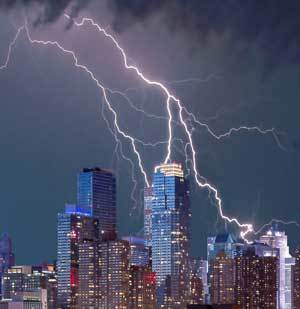
This due to the "stepped leader" that has to find its way through the air (which can act as an insulator against electricity). Hence the "zigzag or staircase" look of a lightning bolt, as it is unable to follow a straight line to the ground.
As a result, the lightning's path may or may not come close to a tall object. If it comes close enough, the "stepped leader" will connect with a "charged streamer" in tall objects, and a strike occurs. If a tall building is too far away from its path, it will hit the next closest object.
If this terminology doesn't make sense to you, you can find a more detailed explanation about how lightning works in this article.
22) The Sky Will Turn Green Before A Tornado
The "green sky phenomenon" is based on a belief that the sky turns green before a tornado appears. Although it often happens that a green sky precedes a tornado, scientists cannot establish any correlation between the two. This may be more a case of coincidence.
It does not mean there is no truth to this belief, as many incidents of green skies present before tornado occurrences have been reported. Meteorologists were only unable to find any connections between them up till now. It may be an unproven fact or just a coincidence.
Conclusion
There are many more myths and folklore around from all walks of life and throughout the world. The aim of this article was to focus on the most common and well-known ones.
By now, you should have many of your questions answered about the truth or accuracy of the majority of these myths (beliefs, folklore, or superstitions). As you would have noticed, many of them are very true or false, but quite a few are based on half-truths or loose facts.
As a result, many of these "myths" are not a simple case of black or white, but plenty of grey areas where some beliefs can be more or less true, depending on situation and perspective. These I will leave for you to decide.
Never miss out again when another interesting and helpful article is released and stay updated, while also receiving helpful tips & information by simply clicking on this link .
Until next time, keep your eye on the weather!
